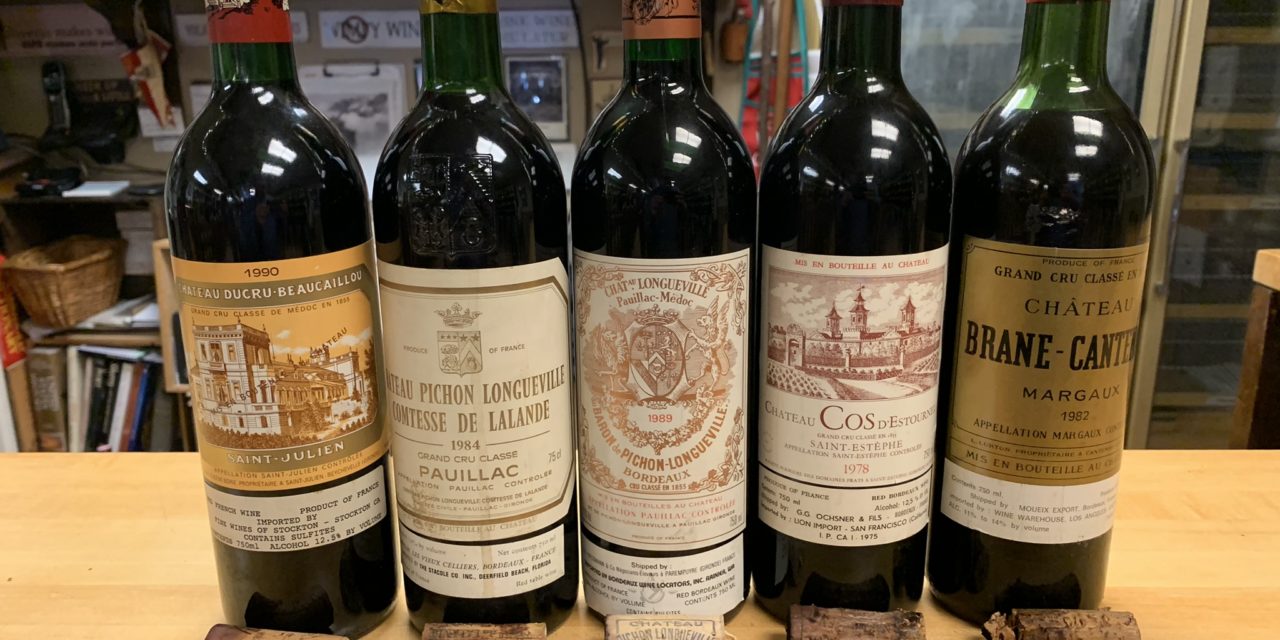
Bordeaux produces some of the most age worthy wines the world. Nevertheless, the question of how long these wines should be kept remains a dilemma. As a general rule, vintages that are declared inferior by pundits should be consumed within ten to fifteen years. Exceptional vintages can go unopened for many decades.
How many?
Keep in mind that the pundits are not always right. Some vintages that were dissed – 1981, 1997 and 1999 for example – have turned out to be more age worthy than initially thought. On the other hand, a good label from a strong year can sometimes disappoint.

We recently tasted five old Bordeaux from famed vintages that helped clarify this dilemma for me.
The tasting, involving nine participants – two wine professionals and seven avid collectors – took place at Wine Wizard’s. Larry Johansen, the proprietor, had procured the wines from an estate sale of a customer whom he personally knew to be a serious collector.
The wines hailed from 1978 to 1990. They were all Second Growths from famed, well respected estates. Here are the tasting notes:
1978 Ch. Cos D’Estournel, St. Estephe:

The light color of this forty three year old wine reflected its age. It had a subtle, vaguely vegetative nose. In the palate it delivered bright, spicy acidity with acceptable tannins from mid-palate on, and a long finish. The upfront fruit was light, as it should be. But the wine was still very much alive, maintaining a well balanced structure. For some, this was their favorite.
1989 Ch. Brane-Cantenac, Margaux:

A disappointment! A tanky, Madeira-like nose introduced an oxidized, Madeira-like palate. The wine was flat, had no acidity or finish. On second tasting twenty minutes later it was even more Madeirized.
The group attributed this to a “bad bottle.” Indeed, a 1975 Brane-Cantenac I recently opened a few months ago was amazingly good by comparison.
1984 Ch. Pichon Lalande, Pauillac:

’84 was a somewhat lesser vintage than its companions in this tasting. The wine had a subtle Bordeaux nose. In the palate it was not complex, decent upfront fruit soon giving way to rough tannins that took it into a short finish. No one hated it, but no one really liked it either. For a usually very elegant “super-second,” this Lalande was, in my opinion, another disappointment.
1989 Ch. Pichon Baron, Pauillac:

Pichon Baron tends to be a somewhat rougher, more rustic companion to its like labeled Lalande. However, in this tasting the 1989 vintage allowed it to overtake its companion. The wine had a nice Bordeaux nose, excellent fruit, a hint of spice in the mid palate and the sort of rough, tannic finish that this label usually delivers.
1990 Ducru Beaucaillou, St. Julien:

Finally, an outstanding wine! Exemplary of everything one expects from a good Bordeaux. Complex with multiple phases, well balanced, with seductive upfront fruit and a smooth, elegant texture. This wine, to me was the best of the bunch.
There you go. Five famed labels from five good vintages, some good, some bad, and one, the youngest, excellent.
Were the bad wines in the bunch that way from the get go? No way! We were simply tasting them well past their prime. As it turned out, the only wine in the group that delivered an exemplary experience was the youngest, a thirty year old Ducru Beaucaillou.
I thus came to a conclusion: Thirty years is the maximum for a Bordeaux collector holding on to good vintages. Beyond that it gets risky. Some may continue to age well, but others won’t.







